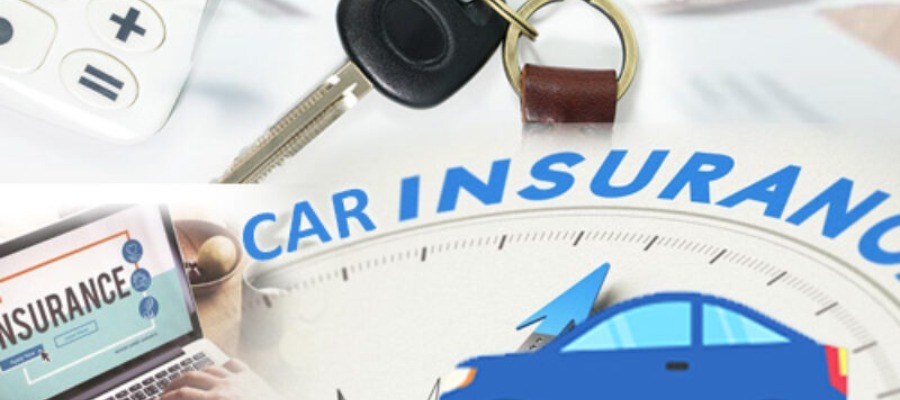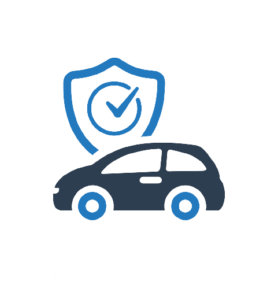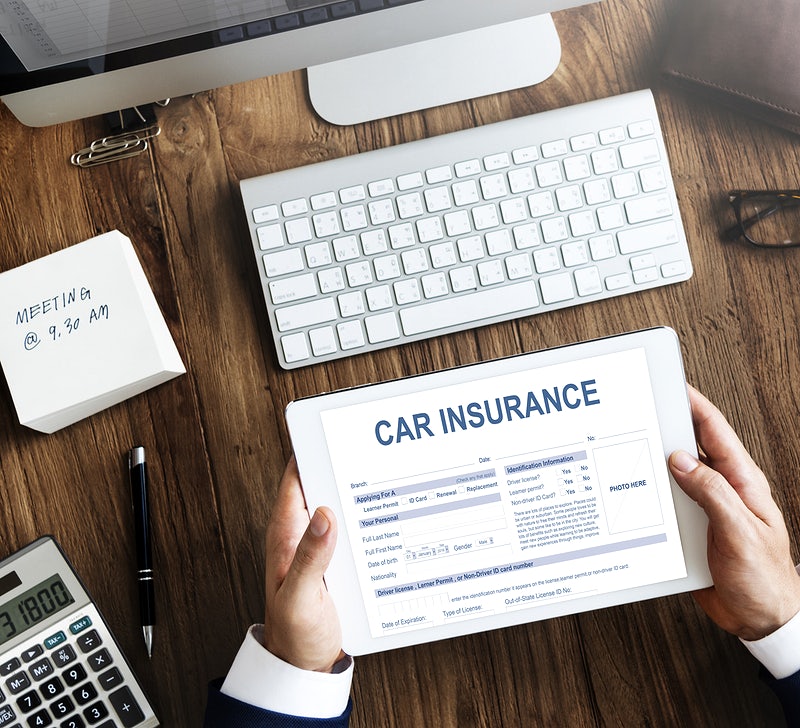
This article is about Car Insurance Glossary. Whether you sell vehicle insurance or are considering purchasing one, you should be familiar with the terminology used by auto insurance providers. Some are reasonably self-explanatory, while others are considerably better understood when accompanied by a definition.
Only after you grasp each word will you be able to assist your customers in selecting the appropriate insurance for their requirements. If you are the buyer, it is critical that you understand each phrase so that you are not caught off guard when it comes time to submit a claim.
Terms

A
Accident
An unexpected and unintentional occurrence that results in damage to at least one vehicle. Additionally, vehicle occupants may sustain injury.
Accident-Only Policies
Insurance plans that pay only claims following a vehicle accident or injury.
Actual Cash Value
This is the fair market value of a car following an accident, destruction, or theft. When the motorist files a claim for the loss, their insurance company dispatches an adjuster to thoroughly inspect every component of the vehicle. They will do an inspection of the vehicle’s body, tires, interior, and equipment.
You will also know the state of the automobile before the robbery accident. The adjuster will achieve the true cash value by looking at similar car models in this location on the basis of all this information.
Actuary
An automobile insurance quantitative risk specialist. Accident frequency, life expectancy, and loss reserves are used to determine the insurance estimates of the actuaries.
Actuarial Report
Document intended to communicate formally the professional findings and suggestions of the actuary to the national regulatory authorities and the Board of Directors or the equivalent. The report also documents and conveys numerous techniques and procedures to ensure that those who receive the report are aware of the importance of the findings and opinions of the actuary. This report also records the analysis for the publication of the opinion.
Additional Interest Insured
A person or business that has been added to a policy as an extra interest insured. This business may be held responsible for an accident that occurs while an insured person or vehicle is on the road. A lienholder might be thought of as an extra insured interest.
Adjuster
A specialist who assists policyholders or claimants in resolving loss claims. They thoroughly analyze and assess each claim, then propose payment depending on the insurance policy contract’s coverage.
Administrative Expense Charge
Cash amount, generally once a month, is taken from a vehicle policy.
The premium is paid before the policy’s effective date once it has been processed and authorized. These are regarded as liabilities by insurance firms and will not be reflected in writing premiums or unearned premium reserves.
Agent
A salesperson of an insurance firm that offers vehicle insurance plans to clients.
Aggregate
The maximum amount of coverage that can be paid for a single loss, several losses over the policy period, or on a single project.
Anti-Theft Device
Devices, either active or passive, that aid in the prevention of car theft. A passive device requires no action, arming itself automatically when the vehicle is switched off, the key is taken from the ignition, or the doors are closed.
An active device does need the driver to do action, such as locking the vehicle or depressing a lock button. These must be reactivated each time the vehicle is switched off or they will not function. Vehicles equipped with any type of anti-theft device may qualify for a reduction in coverage.
Application
Form completed by consumers. This form provides information that the insurance company uses to decide if the client is a good insurance risk.
Appraisal
Written appraisal of the worth of the property. Damage assessments are completed by car repair professionals or insurance adjusters.
Assigned Risk Plan
Individuals who are unable to purchase a standard liability coverage owing to a verified poor driving record are allocated a specific type of policy. These policies are administered by the state. Assigned to write insurance at a premium for certain drivers.
Attach
If a customer has outstanding bills, the insurance company seizes assets or property. The client may also not be able to pay the loan in cash. They have also assets covering the value or quantity of the loan.
$25/$50/$15
These numbers are provided to motorists who purchase liability insurance. They represent the thousands of dollars in coverage provided by the liability insurance for bodily injury per person, physical injury for all individuals harmed in the same event, and property damage liability. Almost every state requires a minimum amount of coverage, with insurers giving the opportunity to purchase more coverage.
Automobile Liability Insurance
Motorists who purchase liability insurance are provided with these numbers. They represent the thousands of dollars in liability insurance coverage for bodily injury per person, physical injury to all individuals harmed in the same event, and property damage liability. Almost every state requires a certain minimum level of coverage, with insurers offering additional coverage options.
B
Binder
This is a temporary insurance contract that shows the vehicle is covered by a policy until the permanent policy arrives.
Bodily Injury
Injuries are suffered by a person. This can include the person’s death.
Bodily Injury Liability Coverage
A section of a policy that protects the driver, up to policy limitations, for incidents that cause injury to pedestrians or other drivers that are legally the driver’s responsibility. This includes medical expenditures, lost wages, and pain and suffering.
C
Cancellation
To terminate an insurance policy before it renews. The company or insured person can cancel.
Claim
A request from the covered driver to cover an insured loss. These are made by phone call, in writing, or online.
Claimant
The person who submits a claim for an insured loss.
Collision Coverage
This is optional coverage for damage caused by a collision with a fixed object, such as a wall. It also includes coverage for rollover incidents. Severe damage caused by a pothole is also covered. It only applies to the automobile covered by the insurance; it will not pay for damages caused by anything else impacted by the car. This is covered under property damage liability.
Combined Single Limit
This policy typically includes a single payout limit for both bodily injury and property damage coverage. It is not the same as a split limit insurance, which has separate limitations for bodily injury (per person), bodily injury per accident, and property damage per accident.
Comprehensive Coverage (for physical damage other than collision)
This covers damages or losses to your vehicle caused by causes other than an accident. Hail, tornadoes, floods, fires, vandalism, falling items, earthquakes, and theft are among the causes covered.
Continuously Insured
A consumer is insured, either by one insurer or when the client switches to a different insurer. There are no gaps in coverage.
Contract
The insurance coverage. Contracts between clients and insurance firms are known as insurance policies.
D
Declarations Page
The name, location, and description of the insured object; the names and address(es) of the policyholders; the time period the policy is in force; premiums payable; and the amount of coverage are all shown on the “dec page.”
Deductible
How much the insured person has to pay after a loss before the insurance company makes its payment.
Dollar Threshold
This level prevents anyone from suing for pain and suffering in states with no-fault vehicle insurance. To be eligible to suit, their medical expenditures must exceed a certain financial level, known as the “threshold.”
Driver Education Credit
Younger drivers might get a discount on their vehicle insurance policy. Once they have completed their driver education course, these drivers will be eligible for this discount. This service is only accessible in a few states.
Driver Improvement Course
Anyone over the age of 55 can take a free course to enhance and refresh their driving abilities. If you satisfy certain qualifying conditions, this course may help you qualify for a discount on your insurance policy.
Driver Status
Policies can be expanded to include more drivers. Each status specifies a person’s driving privileges.
Rated: may actively drive one of the vehicles mentioned on the insurance.
Excluded: A person is not permitted to drive any cars covered by the policy. The policy does not cover this.
Limited: Members of a household who do not drive the cars covered by the policy. This may involve housemates.
E
Effective Date
The date the policy takes effect.
Endorsement
A written agreement that is connected to a policy. This agreement either increases or decreases coverage. Once an endorsement is appended, it takes precedence over the original insurance provisions.
Exclusions
Activities that are not covered by an insurance policy. Normal wear and tear, deliberate acts, and drag racing are examples of these.
Extended Coverage
This is an endorsement that has been added to a policy. It might be a clause in the policy that adds additional coverage for risks that are not covered by the main policy terms.
F
Fair Market Value
The price at which a car is exchanged between interested buyers and sellers. Both parties must be aware of the pertinent information. The buyer and seller are not compelled to sell the vehicle.
Financial Responsibility Law
Every motorist is required by law to have vehicle insurance. Some states accept a cash deposit as proof of the owner’s capacity to pay for carelessness that results in losses to others. The losses occur when the vehicle is in operation. In 47 states and the District of Columbia, this is lawful. Driving a car without proof of insurance is illegal in every state.
Free Look Period
The time period within which an insurer may terminate a vehicle insurance coverage for any reason. It is typically the first 30 days of coverage, however, this varies by state.
Full Coverage
This phrase relates to a driver’s insurance coverage. Even though there is no provision for full coverage, this word typically indicates that the individual has both comprehensive and liability coverage.
G
Gap Insurance
A type of insurance that pays the difference between the real cash worth of a car and the amount still owed on the loan.
Garaging Location
When a vehicle is not in use, it is parked. This is generally the residence of the vehicle’s owner.
Grace Period
The time between a policy’s actual due date and when it will expire. In most cases, this is 31 days. The insurance remains in effect when the premium payment is due but unpaid.
I
Indemnity
Every vehicle insurance policy is built around this principle. The goal of “insurance” is to assist restore the insured individual to the same financial position they were in before the loss (the “make you whole” assumption).
Independent Agent
An insurance broker who works for a number of different insurance firms. This agent is not a representative of any of these businesses. They do, however, earn commissions on insurance sold via each firm.
L
Lapse
The expiry of insurance when one party fails to meet their obligations within the time limit specified. If a driver’s vehicle coverage lapses, he or she may face higher premiums under a new policy since insurance companies have determined that drivers who let their policies lapse pose a higher risk than those who do not allow their policies to lapse.
Liability Coverage
This covers the other driver’s injuries. It also protects the other driver’s car in the event of an accident caused by another motorist. This also includes anyone operating the car with the authorization of the insured driver.
Liability limits
This is the most money that an insurer will payout. It must pay a minimum of $25,000 to each harmed party. The maximum amount of coverage permitted is $50,000. A standard policy offers “$25/$50/$25” coverage, with each figure representing the thousands of dollars that may be paid.
Loan/Lease Payoff Coverage
The insurance company covers the difference between what the insured owns on their car and what the insurance company will pay if the vehicle is stolen or declared totaled. This is also referred to as “gap” coverage. The amount paid is minus the deductible for comprehensive or collision coverage.
Loss
The amount an insurance company pays out on one claim.
Loss History
A policyholder’s total number of insurance claims. Insurance companies evaluate loss history when deciding whether to insure a new policy or renew an existing one. This is also utilized by insurance companies when determining the possibility of a policyholder filing a claim in the future.
Ready to get started?
We’ve got you covered.
M
McCarran-Ferguson
This law, passed in 1945, empowers governments to tax and regulate the insurance industry.
Medical Payments Coverage
This is a component of car insurance coverage. It covers medical bills and burial costs paid by the driver and their passengers in the event of an accident. This protection is provided regardless of who is at fault.
Medical Payments and Personal Injury Protection (PIP)
If the driver, a family member, or a passenger is wounded or killed in a collision, this provides for limited medical and burial expenses. PIP also compensates for lost income benefits.
N
Named Driver Exclusion
An endorsement meant to exclude accidents involving a person who has been excluded from the insurance policy.
Named Driver Policy
This insurance does not cover anyone who lives in the home of a designated insured person. This includes a vehicle insurance policy that has been endorsed to provide coverage solely to the drivers specified in the policy.
Named Insured
The first person on the policy in whose name the policy has been issued.
No-Fault Insurance
Auto insurance regulations in certain places compel insurance companies to reimburse those damages regardless of who caused the collision. Personal Injury Protection is the most fundamental policy, covering the driver’s medical, hospital, and funeral costs. Pedestrian’s and travelers’ expenditures are also reimbursed. Lost wages and other expenditures incurred as a result of the accident may potentially be compensated.
Non-Economic Benefits
These are benefits given out for intangible losses such as emotional stress, pain and suffering, inconvenience, diminished quality of life, and loss of consortium.
Non-Owners Policy
Provides liability, medical expenses, and uninsured motorist coverage to a designated person who does not own the car.
Non-Renewal
A customer’s insurance coverage is not renewed by the insurance company.
O
Occasional Driver
Someone who is not the insured vehicle’s primary driver.
P
Payee
An insured person or beneficiary receives a loss payout from an insurance company. The financial institution that financed the vehicle’s loan or lease is the loss payee under an insurance policy. When a car is totaled, the insurance company pays the loss payee first.
Personal Injury Protection (PIP)
First-party benefits package that provides medical compensation for lost earnings, medical expenses, and any loss of vital services provided by the policyholder. This also covers burial expenses and is connected with no-fault auto insurance.
Policy Period
Also known as a “policy phrase.” This is the time frame for which your policy is in effect.
The insurance payment is made to the insurance company by the insured individual in order to maintain or get a car insurance policy.
Primary Residence
The place where the policyholder lives for the majority of the time that their policy is in effect.
Primary Use
The main use of the policy holder’s vehicle: personal, pleasure, to and from work, or farm use.
Principal Driver
The person who uses the vehicle most often is known as the principal driver.
Property Damage Liability Coverage
This is the portion of a conventional car insurance policy that protects the policyholder for any losses caused by damage or destruction of someone else’s personal property up to the policy maximum. Most of the country needs this coverage.
Proximate Cause
The expense of repairing or replacing lost or damaged property. This does not take depreciation or current market worth into consideration. Some vehicle insurance providers do provide a Guaranteed Replacement Cost for new automobiles if the vehicle is lost during the first 12 months or 12,000 miles.
R
Rate
The price of one unit of insurance coverage. This sum is estimated to be around $1,000. Insurance coverage is determined by the customer’s loss history for similar risks. A car insurance business charges its clients depending on their previous interactions with the company. Age, gender, driving record, marital status, and the brand and model of the car being insured are all used to classify the consumer.
Refund
Amount refunded to a consumer after they overpaid their insurance payments.
Reinstatement
When a vehicle insurance policy is placed back in force after it has lapsed for nonpayment of the premium.
Renewal
Maintaining a policy in force after it has expired. The client is notified that the insurance will expire in x weeks and is given the option to make a payment to extend coverage.
Rental Reimbursement Coverage
A type of automobile insurance that pays a certain amount each day for a rental car so that the policyholder’s car may be repaired after an accident.
Replacement Cost
Another component of the vehicle’s insurance is the monetary amount required to replace damaged personal goods. This does not take into account the expense of depreciation. However, it is restricted by the policy’s maximum cash amount.
Rescission
The insurance company cancels insurance coverage when a substantial misrepresentation (lying) is discovered.
Rider
A formal addition to insurance that extends or restricts the benefits payable under the policy. This is also known as an endorsement.
Roadside Assistance Coverage
This includes services such as tire changing, towing, locksmithing, and battery jumping. Customers can purchase this at an extra fee if it is not already included in their policy.
Rule of 78
This estimates the remaining premium amount, taking into consideration that higher insurance coverage is required at the beginning of a loan. The premium is greater since the loan repayment is larger. When the loan is paid off, the car requires less insurance coverage. The percentage of refunds will fall.
Rule of Anticipation
A technique is comparable to the Rule of 78. Because the total payback on a modern car is larger, it needs a higher level of insurance coverage. After the loan is paid off, the quantity of coverage required decreases, resulting in a decrease in the refund percentage.
S
Salvage Titles
This is decided on a state-by-state basis. Salvage titles are issued in some states based on the degree of damage sustained by a vehicle. In other states, the car must be considered a total loss. These labels define whether the car can be rebuilt or utilized exclusively for components.
In some places, the title is turned after the estimated damage exceeds a certain proportion of the vehicle’s retail value (75 percent is one estimate in New York). This legislation applies even if the car is not a total loss and may be repaired.
Second Named Insured
The insurance broker may ask that another individual be identified as the “second named insured” on a car policy. Their coverage is the same as the designated insured driver’s.
Split Limit
The liability payout limitations on this insurance are set at three distinct levels. One sum is for physical injury per person, another for bodily injury per accident, and a third for property damage per accident. These constraints will be spelled forth in this order in the policy. It may be shown as $100/$300/$100. (for thousands of dollars).
SR-22
A court may demand this document to provide proof of financial responsibility for those convicted of certain sorts of traffic offenses. More about SR-22.
Surcharge
An extra fee is added to a customer’s premium. This is usually the case if the insured has a history of being at fault in accidents.
T
Third Party
A third party is someone who is not the policyholder or family members who are directly covered by the policy. The insurance company is regarded as the second party.
Threshold
The moment at which an injured individual can initiate a lawsuit for compensation for bodily harm and pain and suffering. The individual who caused the car accident will be the one who issued.
Tort
Criminal conduct that causes bodily harm or property damage. This is frequently the basis for legal action (lawsuit). This policy does not cover breach of contract.
Towing and Labor Coverage
This coverage pays for towing costs if a vehicle is unable to be driven. This also includes labor expenses for things such as fixing a flat in the event that the car breaks down.
U
Underwriter
The person who examines insurance applications and assesses whether or not the applicant is an appropriate risk. They also decide how much the consumer will pay for the premium.
Underwriting
The process of determining whether or not a person’s application for coverage will be approved or denied.
Uninsured and Underinsured Motorist Coverage
A component of an automobile insurance policy. It provides coverage for injuries sustained by the customer and others in an accident caused by an uninsured or underinsured motorist. Although UM/UIM coverage is not required in all 50 states, it is a good idea to have it.
Uninsured Motorist Coverage (UM)
A provision in an insurance contract that protects the vehicle’s driver, relatives, and passengers in the event of a collision with an uninsured motorist. Customers and passengers will have access to UM coverage for injuries, including death. There may be exceptions.
Underinsured Motorist Coverage (UIM)
If a motorist who does not have enough insurance coverage is involved in a collision with someone who has UIM coverage, the customer with this coverage will be compensated for their injuries, even death. It also applies to travelers and families who live in the country. Customers can choose the coverage limits that are appropriate for them. Exclusions may apply, so they should study their rules thoroughly.
Uninsured/Underinsured Motorist Property Damage Coverage
This section of a policy, like its bodily injury counterpart, covers property damage caused by a motorist who is uninsured or has insufficient coverage. It also applies to people who have been harmed by an unidentified hit-and-run driver. This sort of coverage is needed in several states. Exclusions may apply once more.
V
Vehicle Identification Number (VIN)
This number is specific to the vehicle to which it is linked. It may be found on the driver’s side of the dashboard, the driver’s side door, the car registration, or the title. It is made up of 17 letters and digits that identify the vehicle’s manufacturer, model, and year.
Verbal (or Descriptive) Threshold
This outlines the sort of significant injuries that must be sustained before a person can bring a bodily injury or damages lawsuit against the motorist who caused the accident. Here are some of the insurance companies you may review: Allstate, Liberty Mutual, Geico.
IN CONCLUSION
Being aware with automobile insurance languages and concerns, routine maintenance, addressing often encountered difficulties situations provides the driver with the necessary knowledge of car insurance.
Have you comprehended everything? If you’re ready to put these terms to work and purchase a vehicle insurance, visit QuoteYeti for assistance in selecting your vehicle insurance.
You may also check out our review of Car Insurance Statistics.









![15 Safest Cities for Drivers in America [2023 Study]](https://www.quoteyeti.com/wp-content/uploads/2023/02/8782c09e-b747-4cd2-b858-707a178e1b53.png)

